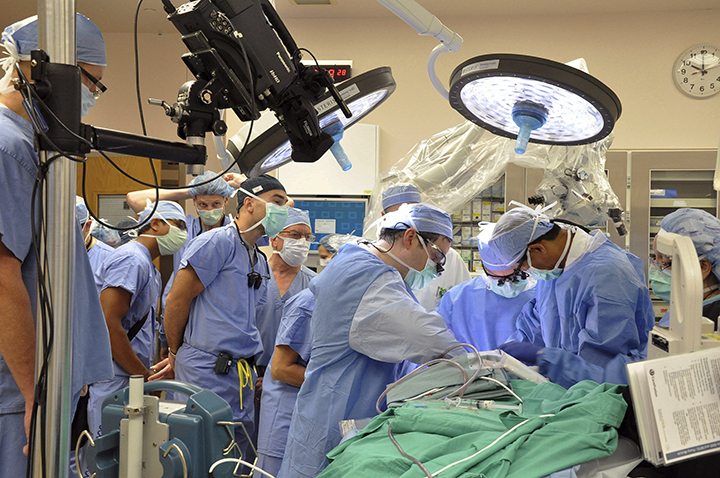TORONTO – Ontario’s New Democrats plan to introduce legislation next month to force the government to disclose the names of physicians who bill the province’s health insurance system and the amounts they charge each year.

There is “no valid reason” the province should not disclose the names of physicians and the amounts they bill OHIP, said NDP health critic France Gelinas.
“This is taxpayers’ money and the information should be made available to the people of Ontario, with the right disclaimer that we understand this is not the take-home pay,” Gelinas said in an interview. “It’s $11 billion of taxpayers’ money that is completely opaque right now. Nobody gets to see it, and that’s wrong.”
Figures show an ophthalmologist was the highest paid physician in Ontario in 2013, billing over $6 million, but the government will not reveal his or her name.
At least two other doctors charged OHIP over $4 million – and 28 billed over $2 million – but all the public can find out is that radiologists and cardiologists were the next highest billing physicians by speciality after the ophthalmologists.
After contract talks with the Ontario Medical Association broke off last week, Health Minister Eric Hoskins said there were 400 doctors who billed over $1 million last year, but he wouldn’t say who they are or where they work.
Most doctors are not covered by Ontario’s so-called sunshine list of public sector employees who are paid over $100,000 a year, even though taxpayers fork out $11 billion a year in compensation for physicians.
Media outlets have launched an appeal to get more information on doctors’ billings after requests through freedom of information were rejected.
The OMA, which represents 28,000 Ontario doctors, said it doesn’t actually get the names of doctors with the amounts billed to OHIP, but added doctors with higher billings usually have high overhead costs.
“They often employ a large and skilled staff, use expensive equipment and require a larger footprint than the average clinic,” said OMA spokeswoman Danielle Milley.
The average Ontario doctor bills OHIP $360,000 a year, but must pay staff and any office expenses out of that amount, which the group DoctorsOntario estimates at 30 per cent of billings.
DoctorsOntario, which describes itself as a grassroots organization dedicated to protecting physicians’ rights, freedom and independence, is planning a job fair in the spring “to help doctors, especially the nearly 20 per cent of new specialists who are unemployed, find work in friendlier jurisdictions.”
Hoskins said the Liberals have hiked doctors’ salaries by more than 60 per cent since they came to power in 2003, which helped stop physicians from leaving Ontario to work in other provinces or the United States.
“We corrected the situation a decade or more ago when there was a brain drain of physicians leaving the province,” said Hoskins. “We now have the opposite, where the income potential of physicians in this province is such that it is attracting physicians.”
If any of the highest billing doctors made any inappropriate claims, the Ministry of Health would have detected them, said the OMA.
“The ministry has clear processes in place to ensure billings are appropriate, which includes regular auditing of doctors’ billings, and that is especially true of those who bill higher than their specialty’s average,” Milley said. “If the ministry paid them, clearly they believed they were providing value for that money.”
A study by Roger Martin at the Institute for Competitiveness and Prosperity, an independent research group supported by the Ministry of Economic Development, said doctors’ compensation is adding to rising health care costs. At $51 billion this year, Ontario’s health-care budget eats up 42 per cent of government program spending.
“Engage physicians to be leaders for change and renew the payment model,” wrote Martin, the former dean of the Rotman School of Management at the University of Toronto. “Use peer performance data to stimulate healthy competition among providers.”
The NDP said many medical specialties have had huge technological advances that allow procedures that used to take hours to be done in a fraction of that time, including eye surgeries, but doctors are paid the same rates as before.
“Those in the million-dollar club are basically surgical specialties that have evolved so much, but the payments remained the same,” said Gelinas. “Things have changed for the better, but the savings have certainly not been passed on.”
Ontario’s Information and Privacy Commissioner declined to comment because of the ongoing appeal of the FOI ruling, but has spoken in the past about a growing trend towards greater transparency when it comes to government expenditures.
British Columbia and Manitoba already release information on physician billings to the public.
- Alberta to overhaul municipal rules to include sweeping new powers, municipal political parties
- Military judges don’t have divided loyalties, Canada’s top court rules
- Norad looking to NATO to help detect threats over the Arctic, chief says
- Grocery code: How Ottawa has tried to get Loblaw, Walmart on board



Comments